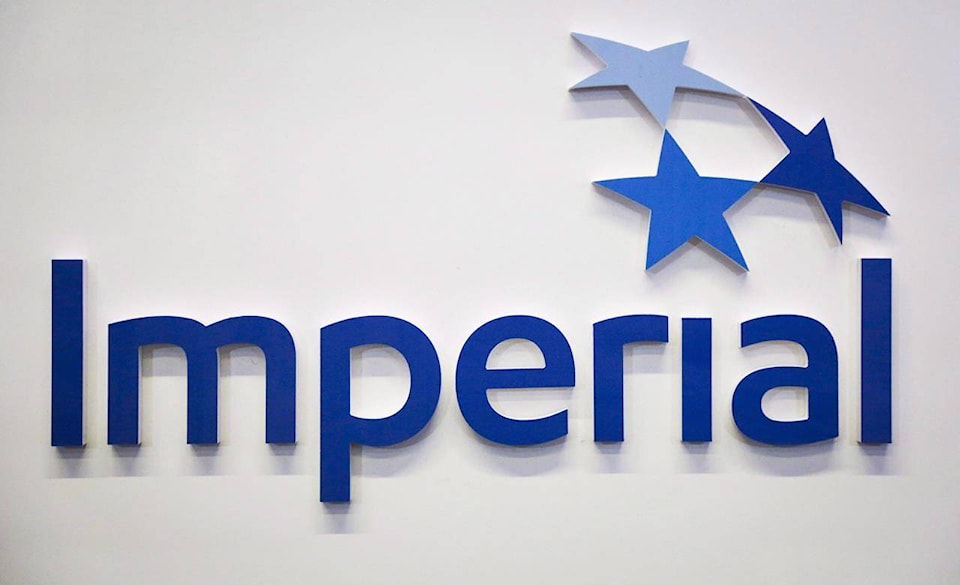CALGARY — Sagging fuel demand due to lockdowns to deal with a second wave of the COVID-19 pandemic is again cutting into volumes and returns at refineries at Imperial Oil Ltd. after a recovery last fall, CEO Brad Corson said Tuesday.
“While the third quarter of 2020 showed significant demand improvement, that recovery was somewhat tempered in the fourth quarter,” Corson said during a webcast to discuss the Calgary-based company’s fourth-quarter results.
“Demand continues to be challenged by the ongoing pandemic and we are now seeing the impact of new community lockdowns in certain parts of Canada, particularly Ontario and Quebec.”
He said demand for gasoline in January was at about 70 to 75 per cent of normal after recovering to near normal levels in the third quarter last year, while jet fuel demand was at about 35 to 40 per cent and diesel demand remained at close to normal levels.
Imperial is one of Canada’s largest oil refiners with two large refineries in southern Ontario and another near Edmonton.
They posted an average utilization rate of 85 per cent in the last three months of 2020, equating to throughput of 359,000 barrels per day, up from 321,000 barrels per day in the fourth quarter of 2019.
The company reported its best oil and gas production in 30 years of 460,000 barrels of oil equivalent per day, mainly thanks to record gross production of 284,000 barrels per day at its Kearl oilsands mine in northern Alberta, up from 208,000 bpd in the fourth quarter of 2019.
Kearl is 29 per cent owned by ExxonMobil Corp., Imperial’s American parent with 69.6 per cent of its equity.
Despite recent increases in benchmark world oil prices and the end of Alberta’s crude oil curtailment program in December, Corson said the company has no intention of increasing its $1.2-billion capital spending plan to add growth projects in 2021.
“We’re certainly encouraged by the price environment … That may tempt you to increase your capital and growth program,” he said, adding: “I think it makes more sense for us to stay the course for now.”
The company disappointed some analysts by leaving its quarterly dividend unchanged at 22 cents per share, ending a recent trend of annual dividend increases.
“Kearl has turned a corner and now generates sufficient free cash flow for IMO to raise its dividend,” said analyst Manav Gupta of Credit Suisse in a report that noted Imperial’s 25 per cent stake in the Syncrude oilsands mine consortium also delivered better than expected returns.
“Now two of the three upstream assets are delivering very strong results (and) IMO refining is outperforming many U.S. independent refiners and U.S. majors.”
Imperial committed to cut 2020 spending by $1 billion, including a $500 million reduction in capital spending plus $500 million in lower operating expenses, to deal with lower oil prices.
Corson said the company in fact cut its capital spend to $874 million, down $940 million below 2019 levels, while slashing production and manufacturing expenses by $985 million compared with 2019.
The savings came in part from job cuts, something Imperial has been reluctant to do during previous downturns. In November, it announced it would lay off about 200 of its 6,000 employees and confirmed it had reduced the number of contractors it employs by about 450.
On Tuesday, Imperial reported a net loss of $1.15 billion in the last three months of 2020 compared with a profit of $271 million in the year-earlier period.
The loss was mainly due to a $1.17-billion non-cash charge related to Canadian unconventional natural gas assets it doesn’t think it will ever develop. The writedown came in at the higher end of a range announced in December.
Total revenue and other income amounted to $6.03 billion, down from $8.12 billion, as the company received lower prices for its raw bitumen and upgraded synthetic crude oil and had lower refinery profit margins.
Exxon reported Tuesday it lost US$20.07 billion in the fourth quarter, versus earnings of US$5.69 billion in the same period of 2019, mainly due to US$20.2 billion in non-cash impairments.
It announced in October it would cut its global workforce by about 15 per cent, equating to about 14,000 jobs.
This report by The Canadian Press was first published Feb. 2, 2021.
Companies in this story: (TSX:IMO)
Dan Healing, The Canadian Press
